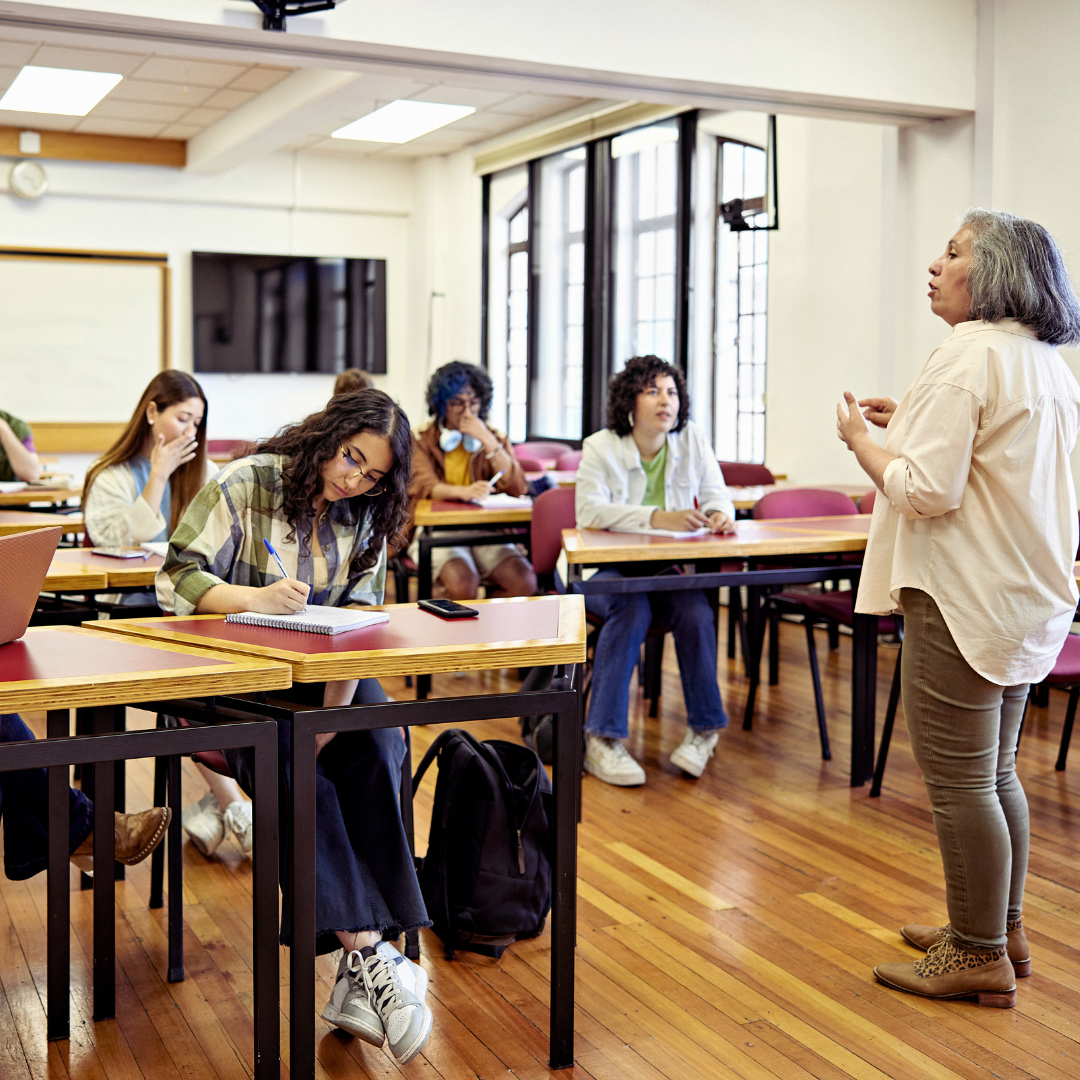Taking effective notes in class can significantly enhance a student’s learning process. Utilizing methods such as the Cornell method, mind mapping, or bullet points can lead to clearer, more organized notes that facilitate better retention and understanding of the material. By focusing on key concepts and summarizing information, students can create notes that serve as valuable study aids.
Many students struggle with traditional note-taking techniques, leading to disorganized pages and difficulty in reviewing later. Adopting a structured approach can transform the way information is recorded, making it easier to engage with the content. Simple practices like using headings, highlighting important points, and incorporating visuals can make a significant difference.
Moreover, incorporating active listening skills while taking notes can enhance comprehension and retention. This means paying attention to the lecturer’s cues and emphasizing essential information, which contributes to a more effective learning experience. With the right strategies in place, students can master the art of note-taking and improve their academic performance.
Fundamentals of Note-Taking
Effective note-taking is essential for enhancing comprehension and retention. Key strategies include understanding individual learning styles, engaging in active listening, and integrating effective questioning techniques.
Understanding Your Learning Style
Each person has a unique learning style that influences how they process information. Common styles include visual, auditory, and kinesthetic learners.
- Visual learners benefit from charts and diagrams.
- Auditory learners prefer lectures and discussions.
- Kinesthetic learners thrive with hands-on activities.
Identifying one’s learning style can help tailor note-taking methods. For example, a visual learner might use color-coded notes or infographics, while an auditory learner may focus on summarizing spoken information. Recognizing preferences enhances retention and makes the learning process more effective.
Importance of Active Listening
Active listening involves fully concentrating on what is being said rather than passively hearing the speaker. This skill enhances comprehension and ensures that critical information is captured accurately.
- Focus: Maintain eye contact and minimize distractions.
- Engage: Nodding or asking short, clarifying questions shows involvement.
- Reflect: Summarize what has been said to reinforce understanding.
Active listening encourages students to process information deeply, leading to better note-taking. It enables them to distinguish between essential concepts and supporting details, resulting in more organized notes.
The Role of Questioning in Learning
Questioning is a vital aspect of the learning process that promotes engagement and deeper understanding. It encourages students to think critically and pursue clarification.
- Types of Questions: Open-ended questions foster discussion and new insights, while closed questions can confirm understanding.
- Timing: Questions should be posed during lectures or discussions to clarify confusing points instantly.
Integrating questioning into note-taking allows students to capture essential ideas and follow-up details. This dynamic approach not only aids comprehension but also reinforces knowledge retention by prompting students to think about the material actively.
Note-Taking Strategies
Effective note-taking strategies enhance organization and improve recall of the material covered in class. These methods help students identify main ideas and create a structured approach to their notes.
The Outlining Method
The outlining method organizes notes in a hierarchical structure. Main topics are listed as headings, with subtopics indented beneath them. This technique emphasizes the relationship between concepts, making it easier to identify key points.
For instance, an outline may begin with a main idea like “Photosynthesis.” Underneath, relevant sections such as “Process,” “Importance,” and “Stages” can be included. Bullet points or numbers can further clarify subpoints.
This method is particularly effective for lectures with a clear flow, as it allows students to capture information in a logical sequence. It promotes quick review, aiding in retention and understanding.
The Mapping Technique
The mapping technique visually organizes information. This method involves creating a diagram where the main idea is at the center, with branches representing subtopics. Each branch can further branch out, adding details or examples.
For example, a map about “World War II” might have branches for “Causes,” “Major Events,” and “Consequences.” Under “Major Events,” there could be sub-branches for “D-Day” and “Pearl Harbor.”
This strategy is especially useful for visual learners. It fosters connections between ideas, enhancing the ability to recall key concepts. Mind maps can be revisited for studying or revising classes efficiently.
The Cornell System
The Cornell system divides the note page into three sections: cues, notes, and summary. The right side is used for jotting down lecture notes, while the left side is reserved for key questions or topics.
Students can summarize the material in the bottom section after the lecture. This promotes active engagement with the notes, leading to better retention.
The Cornell system encourages regular revision and self-testing, making it a powerful tool. By reviewing the cues and summary, learners can reinforce their understanding and prepare effectively for exams.
Execution of Note-Taking
Effective note-taking requires a strategic approach that incorporates various methods and formats. The choice between writing notes by hand and using digital methods can influence focus and retention. Additionally, incorporating essential components and using abbreviations can enhance the quality and efficiency of lecture notes.
Writing Notes by Hand versus Digital Methods
Writing notes by hand has been shown to improve retention and understanding. The physical act of writing engages cognitive processes, which can help with memory. Handwritten notes tend to be more organized and personalized, allowing for better integration of ideas.
On the other hand, digital note-taking offers convenience and flexibility. Typing allows for faster note-taking and easy editing. Various applications provide features like audio recording, tagging, and cloud storage, enhancing accessibility.
Choosing between these methods depends on personal preference and learning style. Each has its advantages, making it essential for students to experiment to find what works best for them.
Essential Components of Lecture Notes
Lecture notes should capture the main ideas and key points presented by the instructor. Important points, such as definitions, examples, and concepts, should be highlighted for easy reference later. A clear structure is crucial; utilizing headings and bullet points can enhance organization.
Incorporating visual aids into notes can also be beneficial. Diagrams, charts, and graphs can simplify complex information, making it easier to understand. Margins and spaces for additional thoughts can further enrich notes.
Regularly reviewing and revising notes helps reinforce learning. This process ensures retention and deepens understanding, making it an important component of an effective note-taking strategy.
Utilizing Abbreviations and Symbols
Using abbreviations and symbols can significantly enhance the efficiency of note-taking. Commonly accepted abbreviations, like “w/” for “with” or “b/c” for “because,” can save time during fast-paced lectures.
Adopting personal symbols can also simplify note-taking. For instance, a star can indicate an important point, while a question mark can denote something needing clarification. Creating a key for these symbols can facilitate their quick interpretation.
Implementing this strategy helps maintain concentration since fewer words are needed. It allows for fluid writing without sacrificing the capture of key concepts. Proper utilization ensures that notes remain concise yet informative.
After-Class Review and Study Techniques
Reviewing notes after class is essential for reinforcing learning and enhancing memory retention. The following techniques can greatly improve the efficacy of study sessions by integrating and reinforcing what was learned in class.
Techniques for Reviewing Notes
Active engagement with notes is crucial. After class, students should review their notes within 24 hours to reinforce memory. Here are effective strategies:
- Summarize: Rewrite key concepts in one’s own words. This deepens understanding and retention.
- Highlight: Use different colors for main ideas, definitions, and examples. This visual distinction aids quick reference.
- Create Questions: Formulate questions based on the notes. This prepares them for self-testing later.
- Connect Ideas: Draw mind maps or visual diagrams that link concepts together. This visualization helps in grasping relationships between ideas.
Incorporating Notes into Study Sessions
Integrating notes into structured study sessions enhances comprehension. Some effective methods include:
- Organized Schedules: Allocate specific times for subjects. Consistency builds a productive routine.
- Study Groups: Discussing notes with peers fosters collaborative learning and clarifies doubts.
- Use Multiple Resources: Complement notes with textbooks, videos, and other resources for diverse perspectives on the material.
This multi-faceted approach ensures a deep understanding of the subject matter.
Memory Aids and Recall Strategies
Employing memory aids can significantly bolster recall. Here are some strategies:
- Mnemonics: Create acronyms or phrases to help remember lists or complex information.
- Flashcards: Use flashcards to test knowledge on key terms and concepts. They facilitate active recall, which strengthens memory.
- Spaced Repetition: Review notes at increasing intervals. This technique optimizes study time and retains information long-term.
These strategies help transform brief engagements with notes into lasting knowledge.



